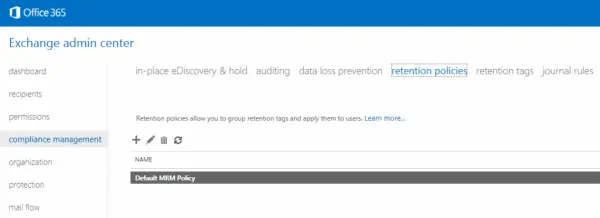To change this, Microsoft offers an Email Retention Period feature for Deleted items in Office. Still, many of the users today are not aware of this feature. So, this is today’s topic of discussion. With Microsoft Office 365 Suite updated, admins can set the length of time for items to remain in the Deleted Items folder. This simplifies the task of looking for finding that email or calendar invite you might have deleted accidentally.
Create custom Email Retention Policy
You can either edit the name of the Default MRM Policy or create a new policy to opt out of this change. To change the policy name in Office 365, navigate to Office 365 Admin, chose Exchange admin center and select compliance management option. Next, look for ‘retention policies’ option. Next, select Default MRM Policy, click the edit icon and then change the name of the policy. Once done, Office 365 will maintain the settings you’ve specified and your policy will not be overwritten. If you have customized your Default MRM Policy and kept the original name, the change will still apply. Kindly note that the changes you make will not apply to the Recoverable Items folder. It will be only for the visible Deleted Items folder and for the Deleted Items folder in both the primary and archive mailbox. It will also not affect any “Move to Archive” actions on the Deleted Items folder.
Email missing from the Deleted Items folder
If you find or notice that messages older than 30 days do not appear under Deleted Items folder of an Exchange Online user’s mailbox you can try the following as a workaround. Final words: Every organization has their own set of business requirements, compliance and legal rules, and general culture of how email is consumed. Administrators must confirm that this change remains in line with existing compliance rules and if not, make all the changes appropriately. They also need to take a look at the potential impact on the amount of new data that will be downloaded by Office 365 client.

